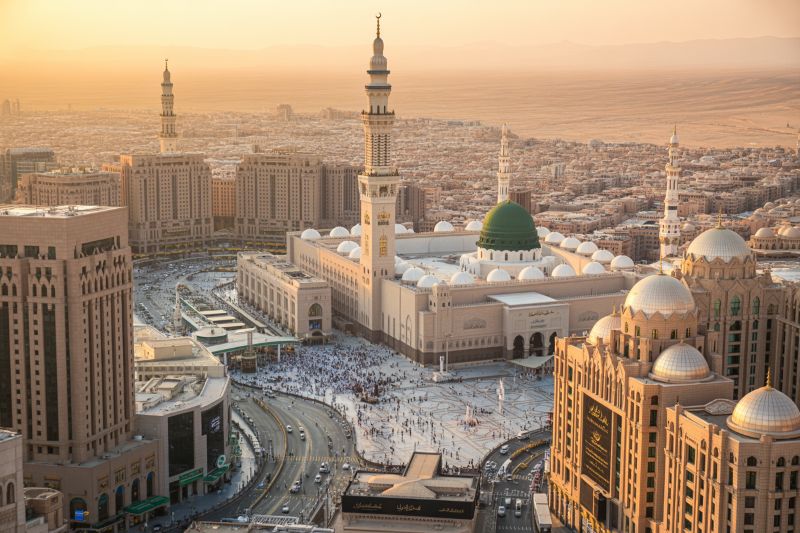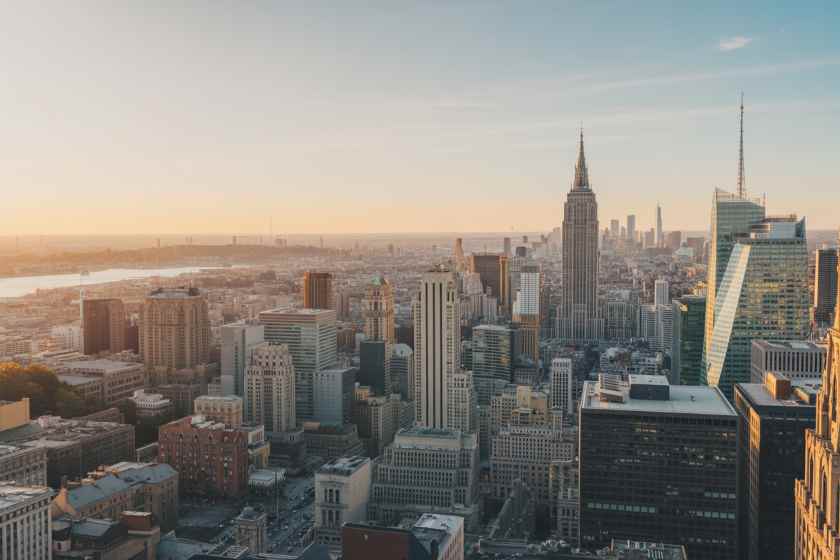Report on Tourism Sector Growth in Madinah and its Alignment with Sustainable Development Goals
Introduction: Q1 2025 Tourism Sector Analysis
A report based on data from the first quarter of 2025 indicates substantial economic growth within the tourism sector of the Madinah region, Saudi Arabia. This expansion, characterized by a significant increase in commercial registrations for tourism-related enterprises, aligns directly with several United Nations Sustainable Development Goals (SDGs), particularly those concerning economic growth, infrastructure, and sustainable communities. The developments signal a strategic move towards economic diversification and sustainable tourism, in line with the Saudi Vision 2030 framework.
Economic Growth and Enterprise Development (SDG 8)
The primary indicator of sector growth is the sharp rise in tourism-related business registrations, which directly supports SDG 8: Decent Work and Economic Growth. By fostering entrepreneurship and creating employment, the region is promoting sustained, inclusive, and sustainable economic growth.
- Total Registrations: By the end of March 2025, 3,877 tourism-related commercial registrations were recorded.
- Previous Year Comparison: This figure represents a 44.8% annual increase from the 2,700 registrations recorded at the start of 2024.
- Economic Impact: This surge in enterprise creation is a key driver for local economic development, creating jobs and improving livelihoods for residents.
The expansion encompasses a wide range of services, including hospitality, travel agencies, and tour operators, contributing to a more resilient and diversified local economy.
Infrastructure and Service Diversification (SDG 9 & SDG 11)
The growth in tourism is catalyzing significant investment in infrastructure and the diversification of services, which is crucial for achieving SDG 9: Industry, Innovation and Infrastructure and SDG 11: Sustainable Cities and Communities. The development of resilient infrastructure supports economic development and enhances the visitor experience.
Key Areas of Development:
- Accommodation Expansion: A notable increase in the availability of diverse lodging options, from luxury hotels to budget-friendly guesthouses, caters to a wider demographic of tourists.
- Transportation Enhancements: Improvements in connectivity between airports, hotels, and key cultural and religious sites are making the region more accessible.
- Diversified Tourism Offerings: Beyond religious tourism, the region is developing its capacity for cultural, historical, and leisure tourism, thereby safeguarding and promoting its unique heritage as a component of a sustainable urban community (SDG 11).
Alignment with National Strategy and Global Partnerships (SDG 17)
Madinah’s tourism development is a core component of the Saudi Vision 2030, a national strategy aimed at diversifying the economy away from oil dependence. This strategic alignment can be viewed as a powerful implementation of SDG 17: Partnerships for the Goals, where national objectives are mobilized to achieve global sustainability targets.
- Vision 2030 Synergy: The plan’s focus on making tourism a central pillar of national growth directly supports the economic and social targets of the SDGs.
- Public-Private Investment: Government investment in infrastructure, combined with a surge in private commercial registrations, demonstrates a multi-stakeholder partnership driving sustainable development.
Socio-Economic Impact and Future Outlook
The expansion of the tourism sector is generating significant socio-economic benefits, directly contributing to the well-being of the local population. The creation of jobs in hospitality, customer service, and marketing provides residents with new opportunities for decent work (SDG 8).
Looking ahead, the continued growth of Madinah’s tourism industry presents an opportunity to solidify its position as a leading sustainable tourism destination in the Middle East. Sustaining this momentum will require a continued focus on balancing economic objectives with the preservation of cultural and religious heritage, ensuring that development remains inclusive and sustainable for future generations. The region’s progress serves as a model for integrating national development plans with the global Sustainable Development Goals.
Analysis of Sustainable Development Goals (SDGs) in the Article
1. Which SDGs are addressed or connected to the issues highlighted in the article?
-
SDG 8: Decent Work and Economic Growth
The article extensively discusses the economic growth in Madinah’s tourism sector. It highlights the creation of new businesses, job opportunities for local residents, and the overall boost to the local economy, which are central themes of SDG 8. The focus on diversifying the economy away from oil and towards sustainable tourism aligns directly with promoting sustained, inclusive, and sustainable economic growth.
-
SDG 9: Industry, Innovation and Infrastructure
The article mentions significant developments in infrastructure to support the tourism boom. This includes “infrastructure upgrades,” the “expansion of accommodations” (hotels, guesthouses), and “improvements in transportation services.” These actions are directly related to building resilient infrastructure, which is a key component of SDG 9.
-
SDG 11: Sustainable Cities and Communities
The article touches upon making Madinah a more inclusive and sustainable destination. It mentions the promotion and safeguarding of cultural heritage by positioning the city as a destination to explore “rich history, culture, and natural beauty,” including landmarks like the Quba Mosque and the Madinah Museum. This aligns with the goal of protecting the world’s cultural and natural heritage.
2. What specific targets under those SDGs can be identified based on the article’s content?
-
Target 8.2 (under SDG 8): Achieve higher levels of economic productivity through diversification, technological upgrading and innovation…
The article connects the growth in Madinah’s tourism sector to the “Saudi Vision 2030,” a plan that “aims to reduce the kingdom’s reliance on oil by boosting other sectors like tourism.” This is a clear example of economic diversification to achieve higher productivity.
-
Target 8.5 (under SDG 8): By 2030, achieve full and productive employment and decent work for all women and men…
The article states that the tourism boom is “creating a wealth of job opportunities” in hospitality, customer service, and marketing, which is “improving the livelihood of many residents in the region.” This directly addresses the goal of creating employment.
-
Target 8.9 (under SDG 8): By 2030, devise and implement policies to promote sustainable tourism that creates jobs and promotes local culture and products.
This target is central to the entire article. The growth of tourism-related enterprises, the creation of jobs, and the shift to promote Madinah’s “rich history, culture, and natural beauty” are all elements of implementing policies for sustainable tourism.
-
Target 9.1 (under SDG 9): Develop quality, reliable, sustainable and resilient infrastructure… to support economic development and human well-being.
The article explicitly mentions that the tourism boom is “driving infrastructure upgrades and the expansion of accommodations” and “improvements in transportation services, such as better connectivity between airports, hotels, and key attractions.”
-
Target 11.4 (under SDG 11): Strengthen efforts to protect and safeguard the world’s cultural and natural heritage.
The article notes a shift towards attracting tourists interested in culture and history, mentioning the promotion of experiences like “exploring Madinah’s historical landmarks, such as the Quba Mosque and the Madinah Museum.”
3. Are there any indicators mentioned or implied in the article that can be used to measure progress towards the identified targets?
-
Indicator for Target 8.9: Number of tourism-related business registrations.
The article provides specific data: “by the end of March, 3,877 tourism-related business registrations were recorded,” which is a direct measure of tourism’s contribution to the economy.
-
Indicator for Target 8.9: Growth rate of tourism-related businesses.
The article quantifies this by stating the increase from 2,700 registrations in 2024 to 3,877 in 2025 represents a “44.8% annual growth rate.”
-
Indicator for Target 8.5: Number of jobs created in the tourism sector.
While not providing a specific number, the article implies this indicator by stating the boom is “creating a wealth of job opportunities” and that “new positions are being created in hospitality, customer service, marketing, and more.”
-
Indicator for Target 9.1: Investment in tourism infrastructure.
The article implies this indicator by mentioning that the government “has invested heavily in tourism infrastructure” and that new hotels and transportation improvements are underway.
4. Table of SDGs, Targets, and Indicators
| SDGs | Targets | Indicators |
|---|---|---|
| SDG 8: Decent Work and Economic Growth | Target 8.2: Achieve higher levels of economic productivity through diversification. | The article points to the Saudi Vision 2030 plan to reduce reliance on oil by boosting the tourism sector. |
| SDG 8: Decent Work and Economic Growth | Target 8.5: Achieve full and productive employment and decent work for all. | Implied by the creation of “a wealth of job opportunities” in hospitality, customer service, and marketing. |
| SDG 8: Decent Work and Economic Growth | Target 8.9: Promote sustainable tourism that creates jobs. | – Number of tourism-related business registrations (3,877 by March 2025). – Annual growth rate of tourism businesses (44.8%). |
| SDG 9: Industry, Innovation and Infrastructure | Target 9.1: Develop quality, reliable, sustainable and resilient infrastructure. | Implied by “infrastructure upgrades,” “expansion of accommodations,” and “improvements in transportation services.” |
| SDG 11: Sustainable Cities and Communities | Target 11.4: Strengthen efforts to protect and safeguard the world’s cultural and natural heritage. | Implied by the promotion of historical landmarks like the Quba Mosque and the Madinah Museum to a wider tourist audience. |
Source: travelandtourworld.com




:strip_icc()/i.s3.glbimg.com/v1/AUTH_63b422c2caee4269b8b34177e8876b93/internal_photos/bs/2025/Z/d/OPUvBaRJ6HG9aYr2rcJg/foto24bra-101-percap-a4.jpg)


